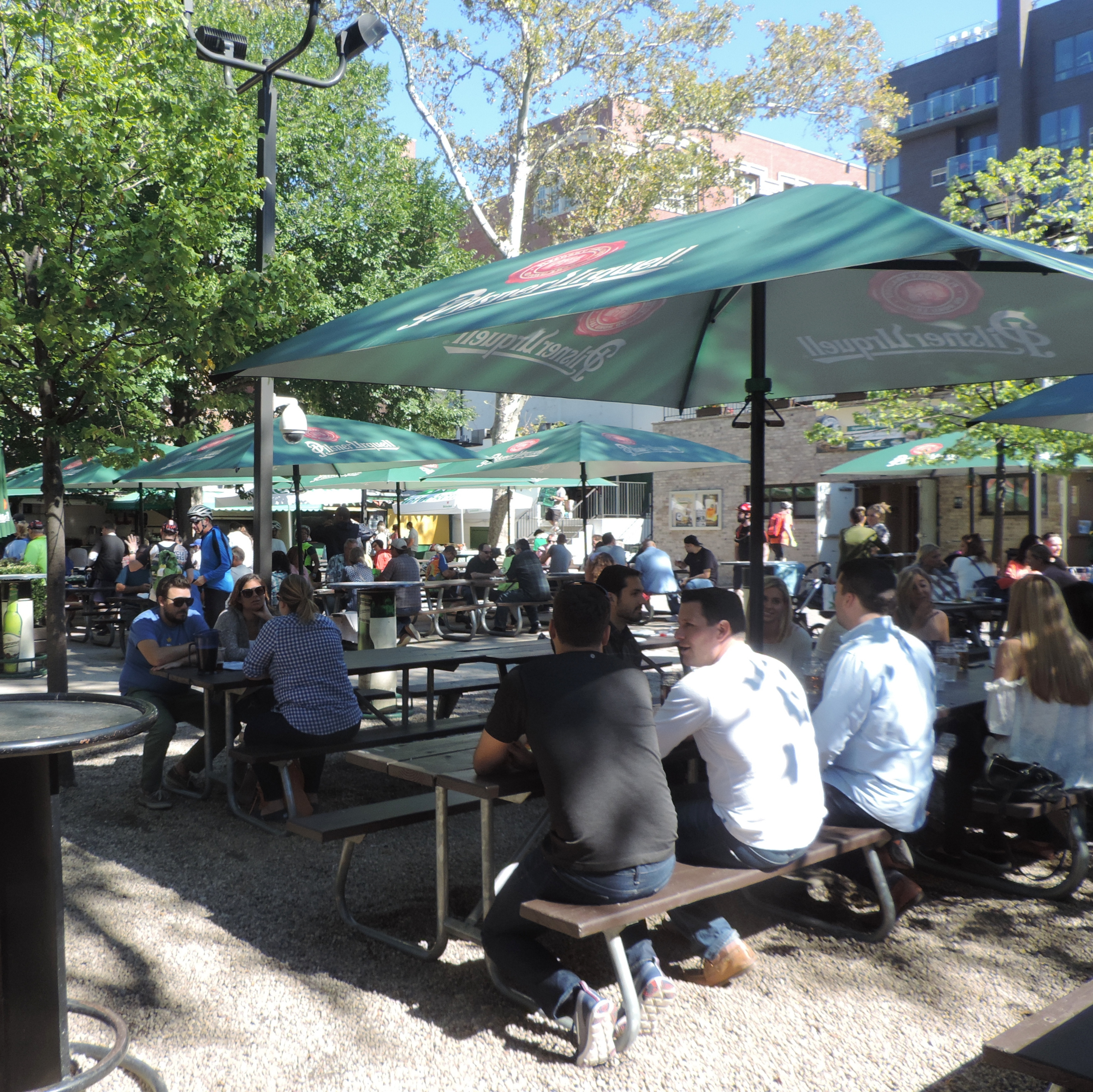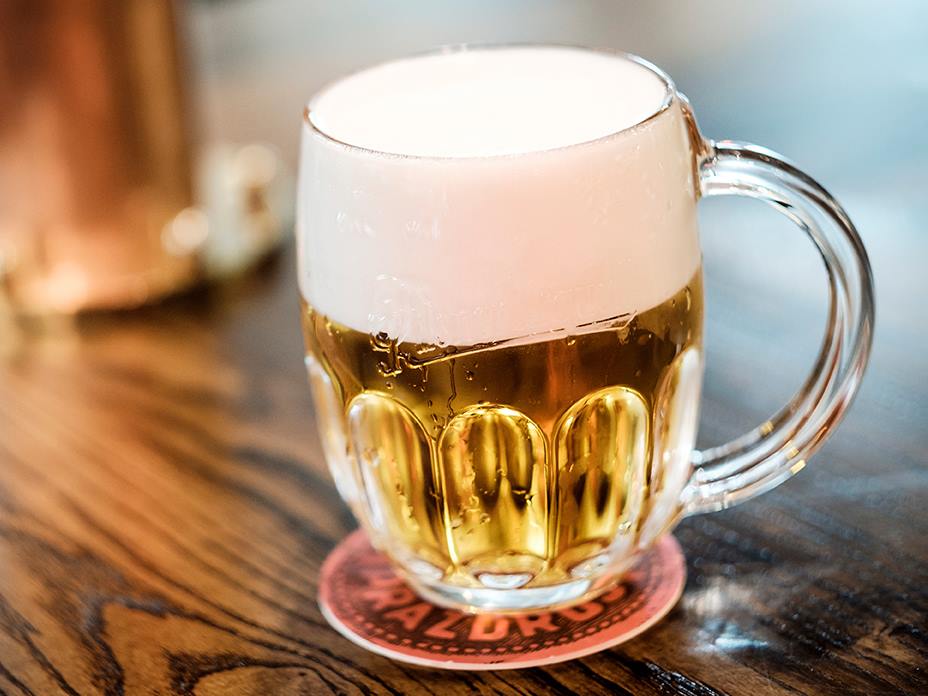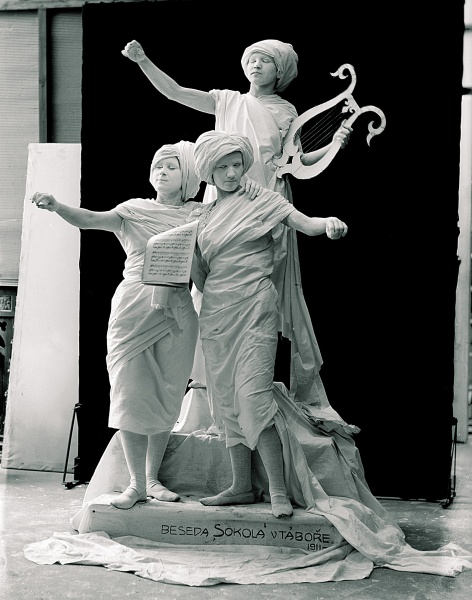|
Bohemian Citizens' Benevolent Society
The Bohemian Citizens' Benevolent Society is a private benevolent society founded in 1892 in Astoria, Queens, to support Czech and Slovak immigrants to the area, as well as people of Czech and Slovak ancestry. The society is commonly known as "Bohemian Hall" after its clubhouse, which is listed on the National Register of Historic Places. Description The founders of the organization said that the purpose of the society is to encourage, support, and maintain Bohemian schools, dramatics, and libraries for Czech children and children of Czech heritage; to maintain a non-profit-making home social for Czechs and people of Czech ancestry in which the Czech culture may be taught and blended with American traditions and culture which makes the people better Americans. The organization has an annual revenue of $1,000,000 and employs a staff of approximately 14. The current president of the organization is Alan Svoboda. ''Note:'' This includes an''Accompanying 20 photographs''/ref> Bo ... [...More Info...] [...Related Items...] OR: [Wikipedia] [Google] [Baidu] |
Astoria, Queens
Astoria is a neighborhood in the western portion of the New York City Boroughs of New York City, borough of Queens. Astoria is bounded by the East River and is adjacent to four other Queens neighborhoods: Long Island City, Queens, Long Island City to the southwest, Sunnyside, Queens, Sunnyside to the southeast, and Woodside, Queens, Woodside and East Elmhurst, Queens, East Elmhurst to the east. , Astoria has an estimated population of 95,446. Originally the site of a War of 1812 Fort Stevens (New York), fortification, a village called Hallet's (or Hallett's) Cove after its first landowner William Hallet, who settled there in 1652 with his wife, Elizabeth Fones grew around the fort. Hallet's Cove was incorporated on April 12, 1839, and was later renamed for John Jacob Astor, then the wealthiest man in the United States, in order to persuade him to invest in the area. During the second half of the 19th century, economic and commercial growth brought increased immigration. Astoria ... [...More Info...] [...Related Items...] OR: [Wikipedia] [Google] [Baidu] |
Beer In The Czech Republic
Beer () has a long history in what is now the Czech Republic, with brewing taking place in Břevnov Monastery in 993. The city of Brno had the right to brew beer from the 12th century, while Plzeň and České Budějovice (Pilsen and Budweis in German), had breweries in the 13th century. The most common Czech beers are pale lagers of the pilsner type, with a characteristic transparent golden colour, high foaminess, and lighter flavour. The Czech Republic has the highest beer consumption per capita in the world. The largest Czech beer breweries are Pilsner Urquell ( Plzeňský prazdroj, Gambrinus, Radegast, Master); Staropramen (Staropramen, Ostravar, Braník, Velvet); and Budweiser Budvar. Other top-selling brands include Krušovice, Starobrno, Březňák, Zlatopramen, Lobkowicz, Bernard, and Svijany. History During the Middle Ages, the Church began to brew beer on Czech territory. Among the oldest monastery breweries in Bohemia were Libušinka in Prague, at th ... [...More Info...] [...Related Items...] OR: [Wikipedia] [Google] [Baidu] |
Buildings And Structures Completed In 1910
A building or edifice is an enclosed Structure#Load-bearing, structure with a roof, walls and window, windows, usually standing permanently in one place, such as a house or factory. Buildings come in a variety of sizes, shapes, and functions, and have been adapted throughout history for numerous factors, from building materials available, to weather conditions, land prices, ground conditions, specific uses, monument, prestige, and aesthetic reasons. To better understand the concept, see ''Nonbuilding structure'' for contrast. Buildings serve several societal needs – occupancy, primarily as shelter from weather, security, living space, privacy, to store belongings, and to comfortably live and work. A building as a shelter represents a physical separation of the :Human habitats, human habitat (a place of comfort and safety) from the ''outside'' (a place that may be harsh and harmful at times). buildings have been objects or canvasses of much architecture, artistic expression. ... [...More Info...] [...Related Items...] OR: [Wikipedia] [Google] [Baidu] |
Neoclassical Architecture In New York City
Neoclassical or neo-classical may refer to: * Neoclassicism or New Classicism, any of a number of movements in the fine arts, literature, theatre, music, language, and architecture beginning in the 17th century ** Neoclassical architecture, an architectural style of the 18th and 19th centuries ** Neoclassical sculpture, a sculptural style of the 18th and 19th centuries ** New Classical architecture, an overarching movement of contemporary classical architecture in the 21st century ** in linguistics, a word that is a recent construction from Neo-Latin based on older, classical elements * Neoclassical ballet, a ballet style which uses traditional ballet vocabulary, but is generally more expansive than the classical structure allowed * The "Neo-classical period" of painter Pablo Picasso immediately following World War I * Neoclassical economics, a general approach in economics focusing on the determination of prices, outputs, and income distributions in markets through supply and dema ... [...More Info...] [...Related Items...] OR: [Wikipedia] [Google] [Baidu] |
Buildings And Structures On The National Register Of Historic Places In New York City
A building or edifice is an enclosed structure with a roof, walls and windows, usually standing permanently in one place, such as a house or factory. Buildings come in a variety of sizes, shapes, and functions, and have been adapted throughout history for numerous factors, from building materials available, to weather conditions, land prices, ground conditions, specific uses, prestige, and aesthetic reasons. To better understand the concept, see ''Nonbuilding structure'' for contrast. Buildings serve several societal needs – occupancy, primarily as shelter from weather, security, living space, privacy, to store belongings, and to comfortably live and work. A building as a shelter represents a physical separation of the human habitat (a place of comfort and safety) from the ''outside'' (a place that may be harsh and harmful at times). buildings have been objects or canvasses of much artistic expression. In recent years, interest in sustainable planning and building practi ... [...More Info...] [...Related Items...] OR: [Wikipedia] [Google] [Baidu] |
Czechoslovakia
Czechoslovakia ( ; Czech language, Czech and , ''Česko-Slovensko'') was a landlocked country in Central Europe, created in 1918, when it declared its independence from Austria-Hungary. In 1938, after the Munich Agreement, the Sudetenland became part of Nazi Germany, while the country lost further territories to First Vienna Award, Hungary and Trans-Olza, Poland (the territories of southern Slovakia with a predominantly Hungarian population to Hungary and Zaolzie with a predominantly Polish population to Poland). Between 1939 and 1945, the state ceased to exist, as Slovak state, Slovakia proclaimed its independence and Carpathian Ruthenia became part of Kingdom of Hungary (1920–1946), Hungary, while the German Protectorate of Bohemia and Moravia was proclaimed in the remainder of the Czech Lands. In 1939, after the outbreak of World War II, former Czechoslovak President Edvard Beneš formed Czechoslovak government-in-exile, a government-in-exile and sought recognition from the ... [...More Info...] [...Related Items...] OR: [Wikipedia] [Google] [Baidu] |
Czech Sokol Movement
The Sokol movement (, ) is an all-age gymnastics organization founded in Prague in the Czech lands of Austria-Hungary in 1862 by Miroslav Tyrš and Jindřich Fügner. It was based upon the principle of " a strong mind in a sound body". Sokol, through lectures, discussions, and group outings, provided what Tyrš viewed as physical, moral, and intellectual training for the nation. This training extended to men of all ages and classes, and eventually to women. The movement spread across all the regions populated by Slavic cultures, most of them part of either Austria-Hungary or the Russian Empire: present-day Slovakia, the Slovene Lands, Croatia, Serbia, Bulgaria, Poland ( Polish Sokół movement), Ukraine, and Belarus. In many of these nations, the organization also served as an early precursor to the Scouting movements. Though officially an institution "above politics", Sokol played an important part in the development of Czech nationalism and patriotism, which found expressio ... [...More Info...] [...Related Items...] OR: [Wikipedia] [Google] [Baidu] |
English Language
English is a West Germanic language that developed in early medieval England and has since become a English as a lingua franca, global lingua franca. The namesake of the language is the Angles (tribe), Angles, one of the Germanic peoples that Anglo-Saxon settlement of Britain, migrated to Britain after its End of Roman rule in Britain, Roman occupiers left. English is the list of languages by total number of speakers, most spoken language in the world, primarily due to the global influences of the former British Empire (succeeded by the Commonwealth of Nations) and the United States. English is the list of languages by number of native speakers, third-most spoken native language, after Mandarin Chinese and Spanish language, Spanish; it is also the most widely learned second language in the world, with more second-language speakers than native speakers. English is either the official language or one of the official languages in list of countries and territories where English ... [...More Info...] [...Related Items...] OR: [Wikipedia] [Google] [Baidu] |
Czech Language
Czech ( ; ), historically known as Bohemian ( ; ), is a West Slavic language of the Czech–Slovak group, written in Latin script. Spoken by over 12 million people including second language speakers, it serves as the official language of the Czech Republic. Czech is closely related to Slovak, to the point of high mutual intelligibility, as well as to Polish to a lesser degree. Czech is a fusional language with a rich system of morphology and relatively flexible word order. Its vocabulary has been extensively influenced by Latin and German. The Czech–Slovak group developed within West Slavic in the high medieval period, and the standardization of Czech and Slovak within the Czech–Slovak dialect continuum emerged in the early modern period. In the later 18th to mid-19th century, the modern written standard became codified in the context of the Czech National Revival. The most widely spoken non-standard variety, known as Common Czech, is based on the vernacular of ... [...More Info...] [...Related Items...] OR: [Wikipedia] [Google] [Baidu] |
Staropramen
Staropramen Brewery (Pivovary Staropramen s.r.o.) in the Smíchov district of Prague is the second largest brewery in the Czech Republic. It was founded in 1869 and the brand name Staropramen, literally meaning "old spring", was registered in 1911. It is owned by Molson Coors and its products are exported to 37 countries, mostly in Europe and North America. History Staropramen Brewery's history begins in 1869 when shares for a "Joint Stock Brewery in Smíchov" were offered for sale. The brewery building was completed and beer first brewed in 1871. The Ostravar Brewery opened in 1898 followed a year later by the Braník brewery; these two breweries would later merge with Staropramen. Due to competition from other Prague breweries, the brand name Staropramen, which translates as "old spring" (water source), was registered in 1911. After the First World War, all three breweries saw a period of sustained growth, and by the 1930s, Staropramen was the largest brewery in Czechoslov ... [...More Info...] [...Related Items...] OR: [Wikipedia] [Google] [Baidu] |
Czechvar
Budweiser Budvar ( ) is a brewery in the Czech city of České Budějovice (), best known for its original Budweiser or Budweiser Budvar pale lager brewed using artesian water, Moravian barley and Saaz hops. Budweiser Budvar is the fourth largest beer producer in the Czech Republic and the second largest exporter of beer abroad. The state-owned brewery and its Budweiser pale lager have been engaged in a trademark dispute with Anheuser-Busch over the right to market and sell the beer under the name ''Budweiser'' since the start of the 20th century, and consequently is imported as Czechvar in some countries. The brewery is incorporated as Budějovický Budvar, národní podnik ("Budweiser Budvar, national enterprise"). History 1265–1895 The history of brewing in České Budějovice () dates back to 1265, when Ottokar II, King of Bohemia, granted the city brewing rights. At one point, the city was the imperial brewery of the Holy Roman Empire. To promote the quality ... [...More Info...] [...Related Items...] OR: [Wikipedia] [Google] [Baidu] |
Krušovice
Krušovice is a municipality and village in Rakovník District in the Central Bohemian Region of the Czech Republic. It has about 600 inhabitants. Etymology The initial name of the village was Krušejovice. It was derived from the personal name Krušej, meaning "the village of Krušej's people". Geography Krušovice is located about north of Rakovník and west of Prague. It lies mostly in the Džbán range, but it also extends into the Rakovník Uplands in the west. The highest point is at above sea level. History The first written mention of Krušovice is in a deed dating from the reign of King Ottokar (1253–1278). The village was owned by various less important noblemen until 1583, when Emperor Rudolf II, Holy Roman Emperor, Rudolf II bought it to unify the Křivoklát Castle, Křivoklát estate. The beer brewing was first documented in 1581. During the Thirty Years' War, Krušovice was damaged and depleted, and it took a long time to recover from the effects of the war. I ... [...More Info...] [...Related Items...] OR: [Wikipedia] [Google] [Baidu] |







